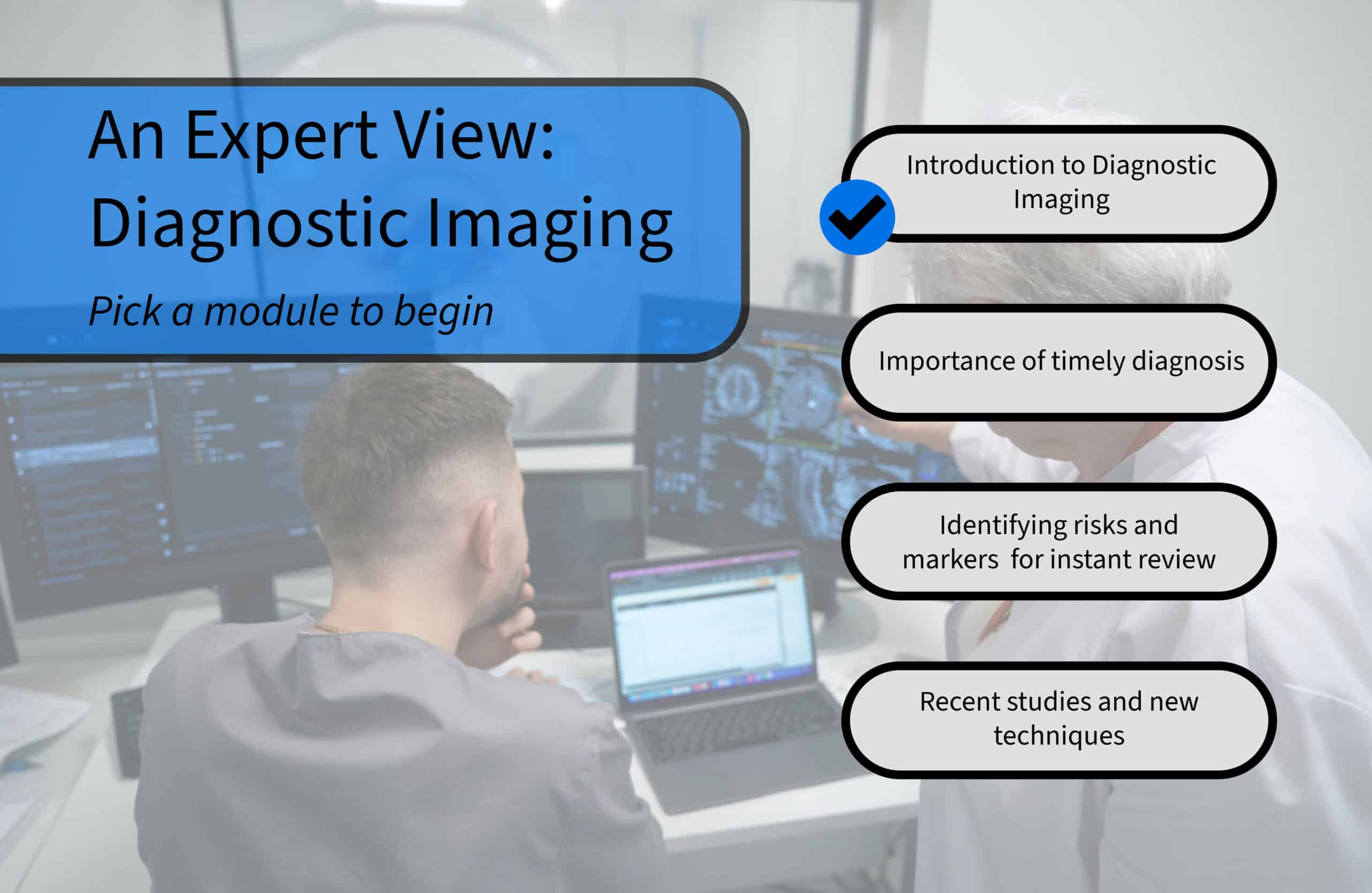by Brock Horning | April 2025
Did you know that 34% of people always click through to the end of linear training videos without watching them? In the healthcare landscape, where new technologies and treatment are regularly evolving, continual learning is essential. Without instructors to guide learners through the materials, learning designers must work to catch and hold the attention of busy healthcare professionals with limited time.
Interactive video provides an ideal solution to engage learners, measure knowledge retention, and promote active learning. Here are some ways interactive video is transforming online healthcare training.
The current healthcare training landscape
The healthcare field is continually evolving and shifting as new technologies, treatments, and regulations are introduced. Ongoing learning and training is an essential element of effective healthcare. However, the success of online healthcare training has historically varied wildly.

The opening menu for an online healthcare training course
Studies have shown that nearly 4 in 5 people don’t give training videos their full attention. It’s down to the learning design to encourage engagement and keep the attention of busy healthcare professionals.
Learning designers have more digital tools at their disposal than ever before. Generative AI has made basic content creation easy and other creation tools like Vyond and Canva have opened up huge capabilities. However, for many, there is no way to track the impact of these tools or how effective their online healthcare training is proving to be.
The measurement of success still comes back to course completion.
How should we actually measure success?
Rather than looking at course completion, learning designers need to know whether viewers are coming away with new knowledge, understanding, or updated perspectives.
We already know that interactive video is 81% more effective at keeping learners’ attention, leading to better information retention. But interactive video can also measure the impact of the learning material and discover whether learners are receiving and retaining the knowledge they need. And
The true measurement of success for healthcare training is whether learners have greater confidence and understanding in key topics.
Play Stornaway’s Healthcare Training Scenario Quiz template
The most popular ways to increase engagement in healthcare training
Learning designers in healthcare are already using interactive video to create more engaging online training. Here are three inspiring examples producing strong results.
From linear to interactive learning
Making your online healthcare training more engaging doesn’t have to mean a complete overhaul. If you already have a stack of linear training videos or static content, it takes just a few steps to turn them into an engaging interactive learning journey.
Create an interactive experience that allows learners to navigate their way through the different videos, modules, and static content in the order that suits them. The simple act of allowing choice and agency creates a fundamentally different experience for the learner. By actively choosing a module or topic, the learner is already engaged and invested in the learning material. A quiz or assessment can be linked to each module to confirm that the learner understands the topic.
This is a quick win for learning designers that can deliver real results.
Play example assessment question for healthcare training
Continual assessment modules
Conducting in-person assessments can be a time-consuming process for instructors and only captures the learner’s knowledge at a single moment in time. To increase efficiency, continual assessment modules are replacing in-person assessment to create a more comprehensive picture of a learner’s evolving understanding of a given topic.
Combining interactive assessments, interactive training modules and immersive 360 scenario training, these continual assessment modules can track and store results from individual journeys. This gives assessors an up-to-date understanding of the learner’s progress at any given moment. The interactive experience can also give students immediate feedback, send them further resources to consult, and let them replay sections if required.
Before and after module assessments
To truly get a handle on whether learners are seeing and retaining the information they need, some healthcare organisations are turning to before-and-after assessments. After turning their linear videos into interactive conversations, these learning experiences deliver a short quiz before showing a learning module. The same quiz is then delivered afterwards to assess whether the learning material has been successful.
This format can really highlight how effective interactive learning is proving to be. In one Stornaway project, agency We Are Tilt achieved a whopping 90% attitudinal change before and after a series of interactive conversations for Diageo and the UN’s global drink-driving campaign.
How can interactive video improve your online healthcare training?
These are just three examples ways that interactive video is boosting the success of online healthcare training. If you’d like to see specific use cases or more learning and training examples, head to:

